NANBYO Day at Expo 2025: Taking On Rare Diseases Together, Joyfully and Inclusively!
Joined by Crown Princess Kiko, patients, families, and supporters of people with rare diseases marked NANBYO Day in a special event at Expo 2025 Osaka-Kansai.

このページを 日本語 で読む
Let's all have fun thinking about it! Expo 2025 Osaka-Kansai, brought people together on May 23 in celebration of Japan's NANBYO Day and International Rare Disease Day (RDD Day). The event brought attention to the world's rare and intractable diseases.
Supporters joined in the collaboration as patients performed songs and dances, sending out the message that "it's okay for each person to be different."
Attending the event, her Imperial Highness Crown Princess Kiko joined in the singing. She also shared the words in her signature sign language, at which she excels. Afterward, she interacted with the patients and their families.
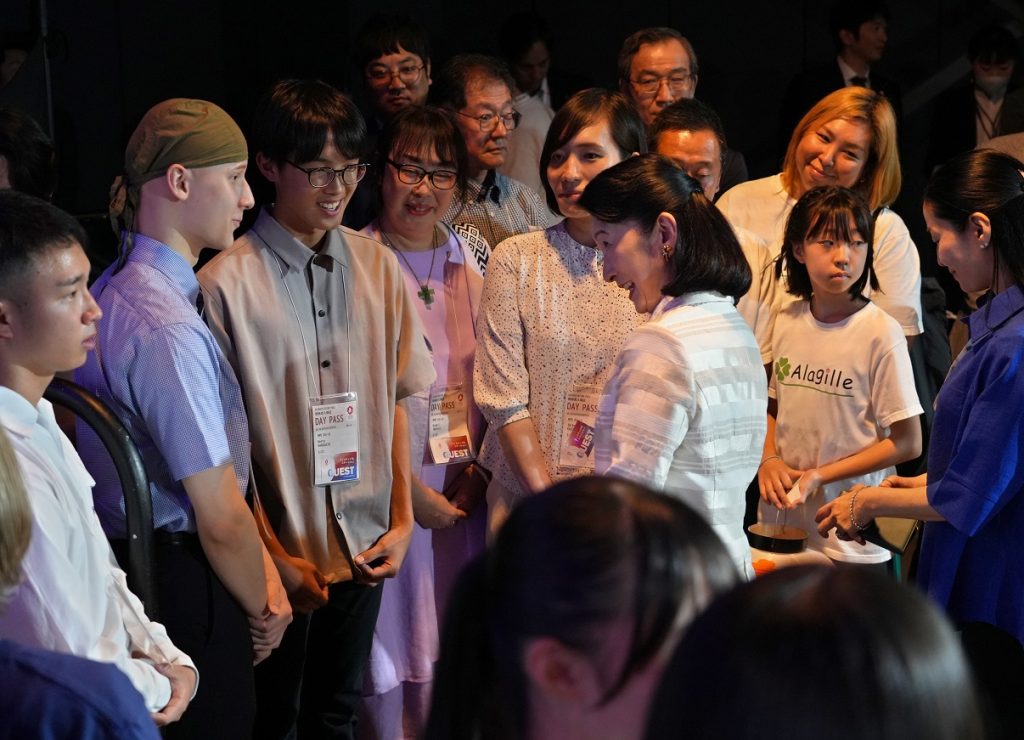
Everyone is Different.
"For all of us, there are things we cannot do. But it's okay that we are all different," crooned singer-songwriter Ayako Ozawa from her wheelchair. She battles muscular dystrophy, an intractable disease that causes muscle weakness.
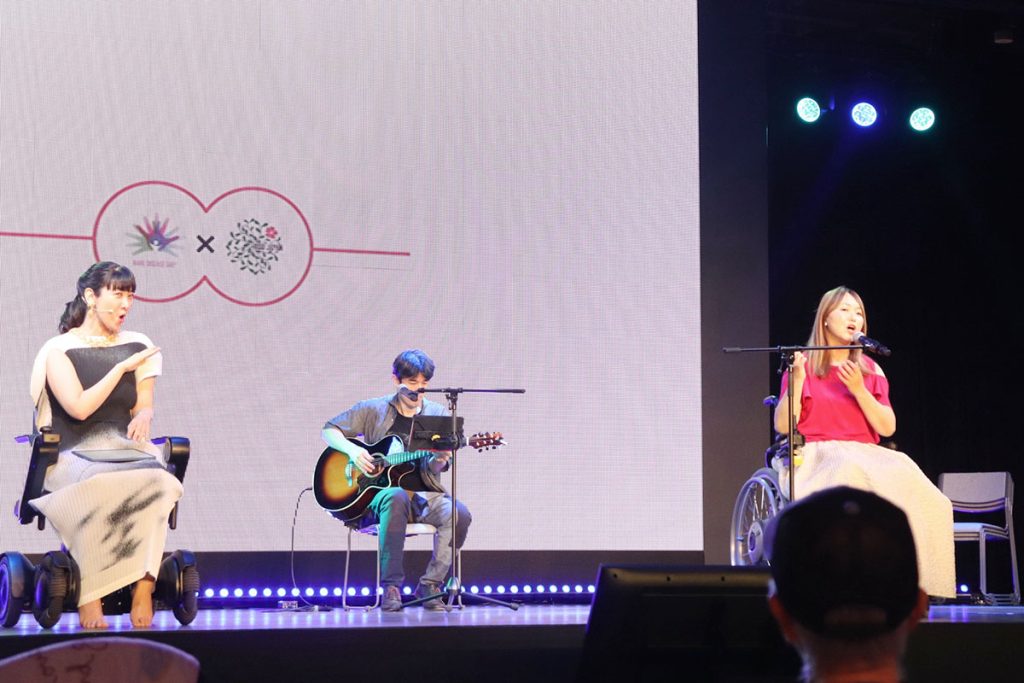
Ozawa was diagnosed with muscular dystrophy at the age of 20. At one time, she had given up on finding a job, getting married, and having children. However, with the encouragement of those around her, she was able to accomplish all three. She found a job, got married, and became a mother.
"I can't raise my arms, and there are many things I can't do," Ozawa told the crowd. "But it means a lot to let people know that we are all the same human beings at this Expo."
Soprano Mamiko Sakaida, who has been diagnosed with Neuromyelitis Optica Spectrum Disorder (NMOSD), an autoimmune disease, also let her voice soar from her wheelchair.
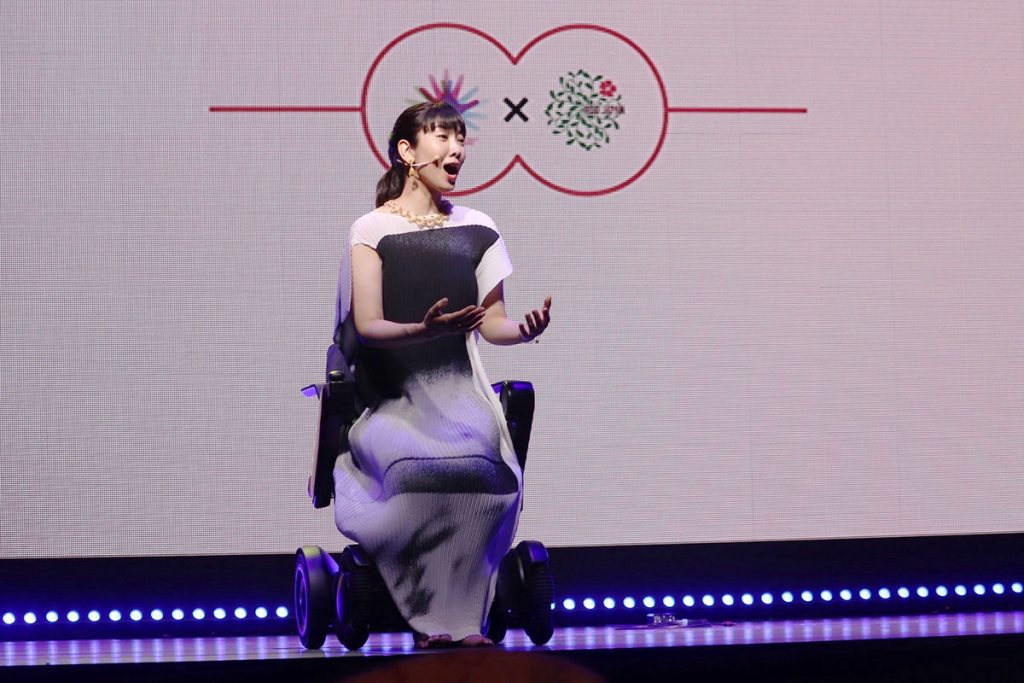
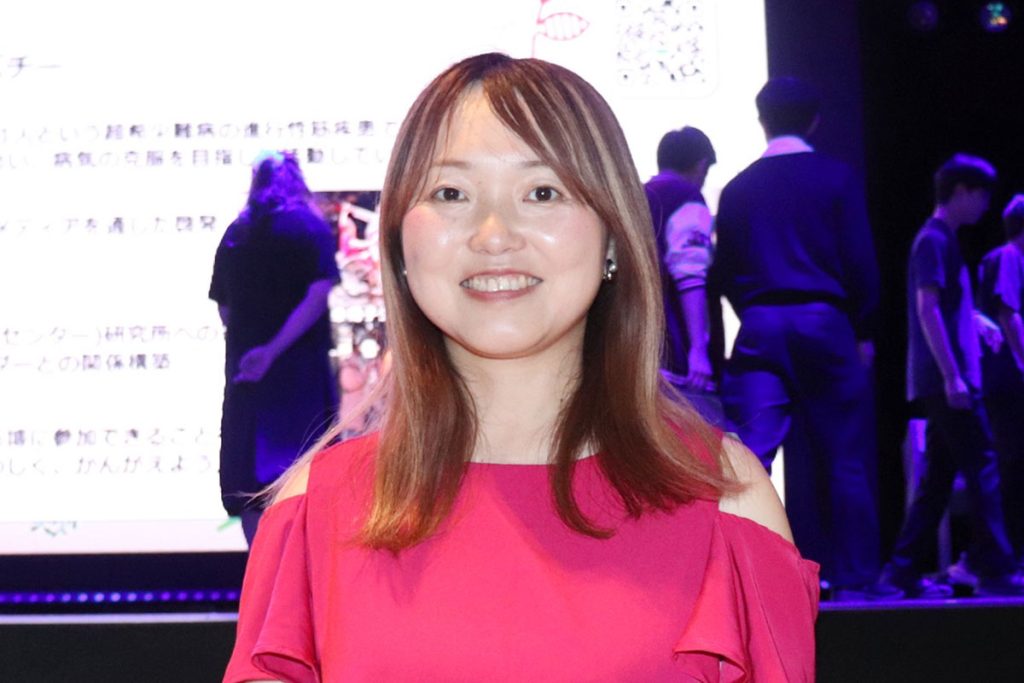
"As the disease developed, I became paralyzed from the waist down," she said. "Through rehabilitation, I have recovered to the point where I can sing, but it still hurts as if I am being stabbed. There are friends in this venue who are suffering from the same disease. I want people to learn about this while they're at the Expo."
Japan's First NANBYO Day at Expo
Rare and intractable diseases are defined by their low prevalence and complex pathophysiology. These features often result in delayed treatment and hinder drug development. Meanwhile, there are approximately 7,000 rare diseases in the world, with an estimated 350 million patients.

In 2016, an NGO focused on rare diseases was established within the United Nations. Its task: create a patient community and raise social awareness. Later, in 2024, Rare Diseases International, a rare disease patient association, was approved as an official partner of the World Health Organization.
Wanting a "rare day" to bring attention to the disease annually, February 29 in leap years immediately came to mind. Taking it as a cue, February 28, the day before, was designated World Rare Disease Day. During the last week of February, special events featuring rare diseases and their victims were held around the world. EURODIS, a nonprofit alliance of rare disease patient organizations, hosted the global Rare Disease Day Event on February 28, 2022, at the Dubai Expo (October 2021-March 2022).
This time, however, Expo 2025 Osaka-Kansai does not include the month of February. Japan, therefore, marked its international contribution by hosting NANBYO Day on May 23 to highlight rare diseases domestically.

Yukiko Nishimura, president of the NPO ASrid, played a key role in organizing the event. "This is the first time that an intractable diseases day event has been held at an expo in Japan," she said. "'Everyone' is the key word. It is an opportunity for patients, families, and supporters to come together and appeal to visitors. We hope people will begin thinking about intractable diseases in a more positive light."
High School Students Take Up the Appeal
Patients, families, and high school students also participated in the NANBYO Day activities. They performed a play of their own composition and expressed their frank opinions.
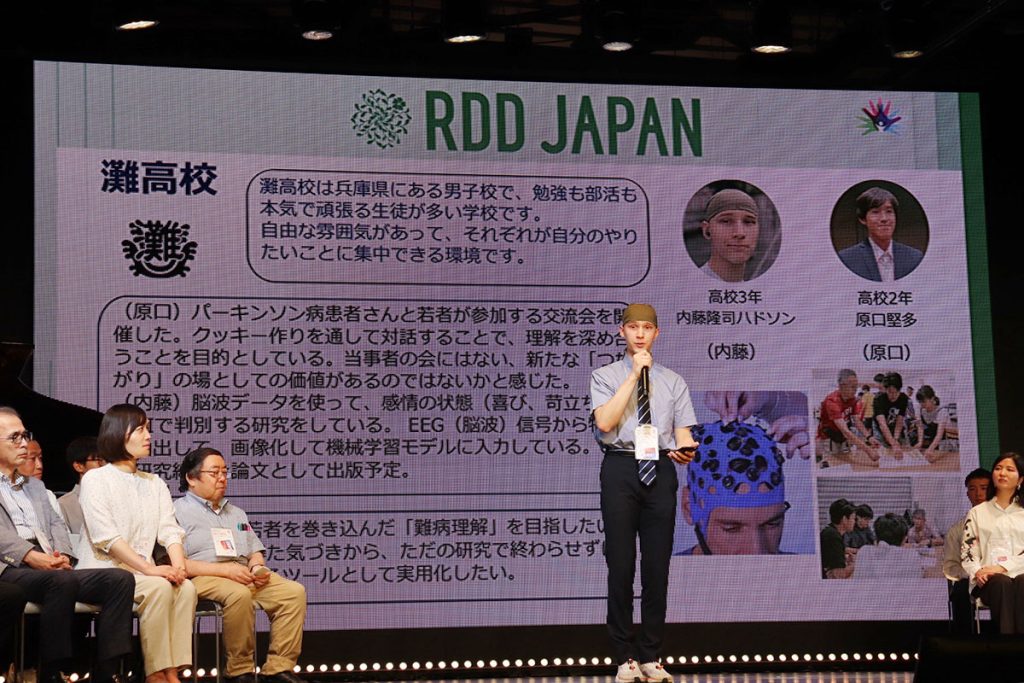
A high school senior from Osaka Jogakuin High School confided, "Grave's disease changed my appearance. I was trapped because people around me did not understand.
"But I transferred to my current school and underwent surgery, and am now able to communicate with others," she added. "I want a society where people can have confidence in themselves and not be ostracized."
Takashi Hudson Naito, a junior at Osaka's Nada High School, described his research on brainwaves using AI to determine emotional ups and downs. Naito has a chronic illness himself. "I wear a scarf on my head because I have no hair or eyelashes due to alopecia, the cause of which is unknown," he explained. His dream is to deepen his research and put it to practical use for patients suffering from incurable diseases.
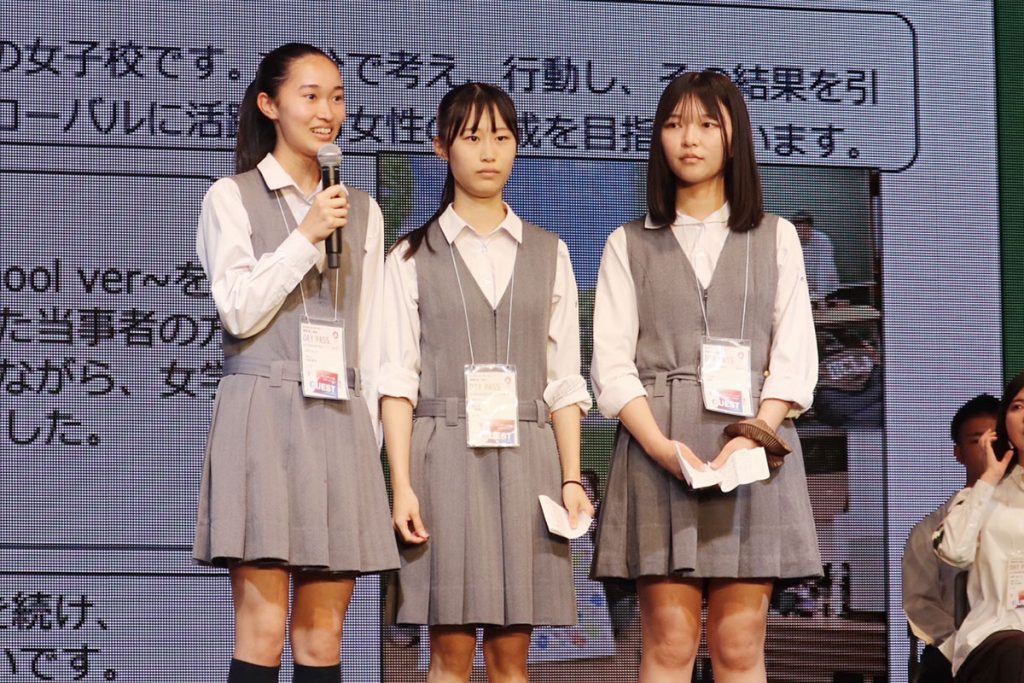
The Expo is an international event that reflects the future of society. For high school students and those with rare diseases, it has also provided an opportunity to interact with other patients and their families while introducing the problem to the broader public. They want to keep the focus on "tomorrow." Meanwhile, they are spreading their optimism for discovering new treatments and solutions for rare and intractable diseases.
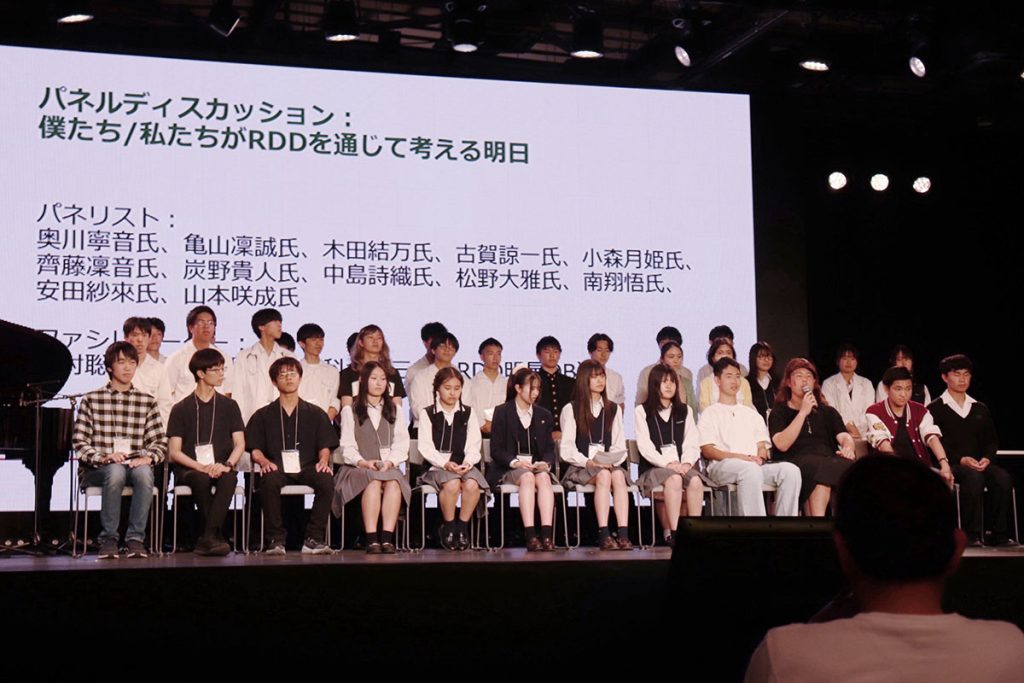
RELATED:
- Osaka Opens New Medical Innovation Hub Focused on Regenerative Medicine
- How Innovative Students Used Tech to Drive Regional Revitalization in Saikai City
- BOOK REVIEW | 'Tales of Plague and Pestilence: A History of Disease in Japan'
Author: Mika Sugiura
このページを 日本語 で読む











